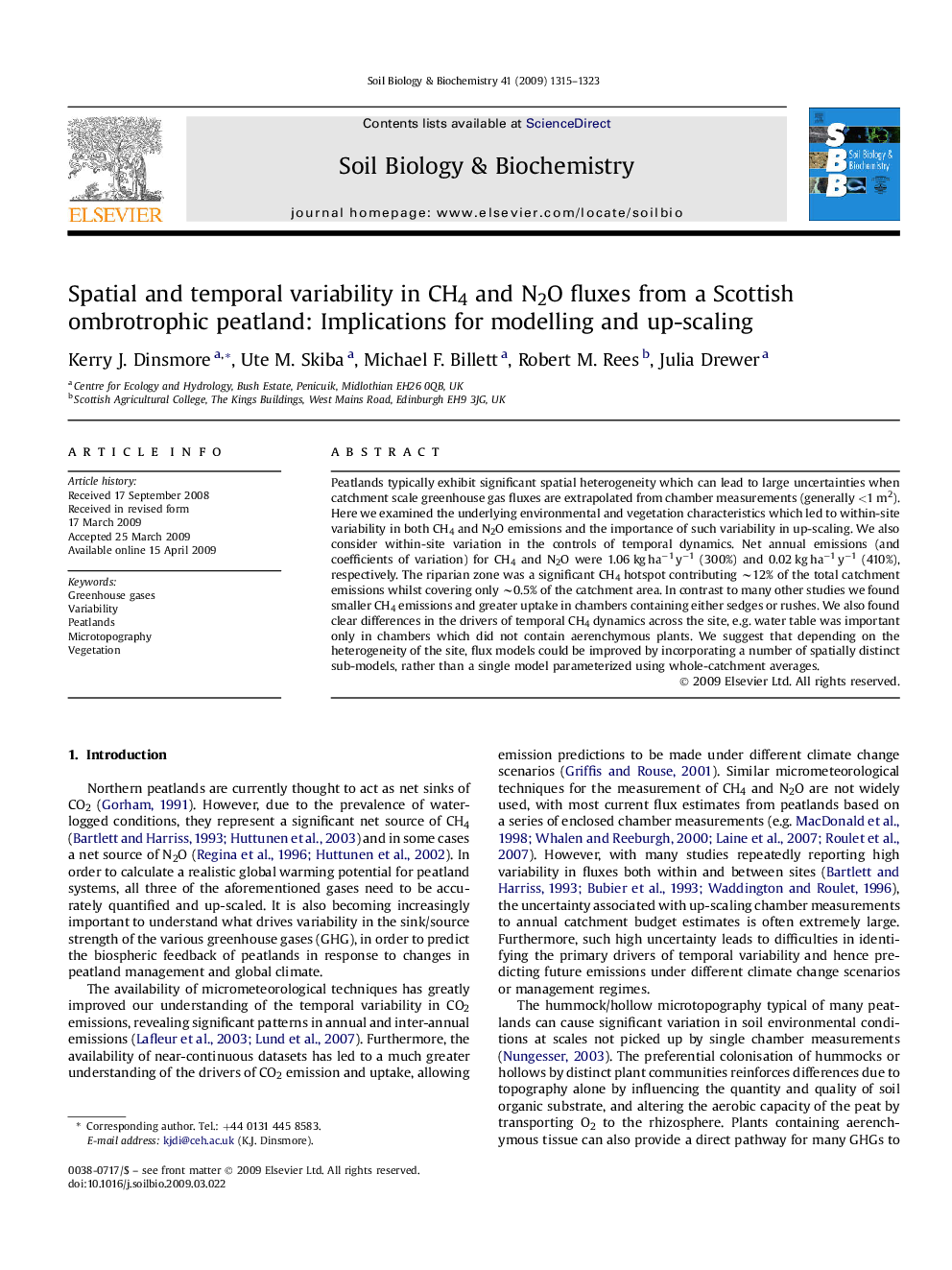| Article ID | Journal | Published Year | Pages | File Type |
|---|---|---|---|---|
| 2025635 | Soil Biology and Biochemistry | 2009 | 9 Pages |
Peatlands typically exhibit significant spatial heterogeneity which can lead to large uncertainties when catchment scale greenhouse gas fluxes are extrapolated from chamber measurements (generally <1 m2). Here we examined the underlying environmental and vegetation characteristics which led to within-site variability in both CH4 and N2O emissions and the importance of such variability in up-scaling. We also consider within-site variation in the controls of temporal dynamics. Net annual emissions (and coefficients of variation) for CH4 and N2O were 1.06 kg ha−1 y−1 (300%) and 0.02 kg ha−1 y−1 (410%), respectively. The riparian zone was a significant CH4 hotspot contributing ∼12% of the total catchment emissions whilst covering only ∼0.5% of the catchment area. In contrast to many other studies we found smaller CH4 emissions and greater uptake in chambers containing either sedges or rushes. We also found clear differences in the drivers of temporal CH4 dynamics across the site, e.g. water table was important only in chambers which did not contain aerenchymous plants. We suggest that depending on the heterogeneity of the site, flux models could be improved by incorporating a number of spatially distinct sub-models, rather than a single model parameterized using whole-catchment averages.
